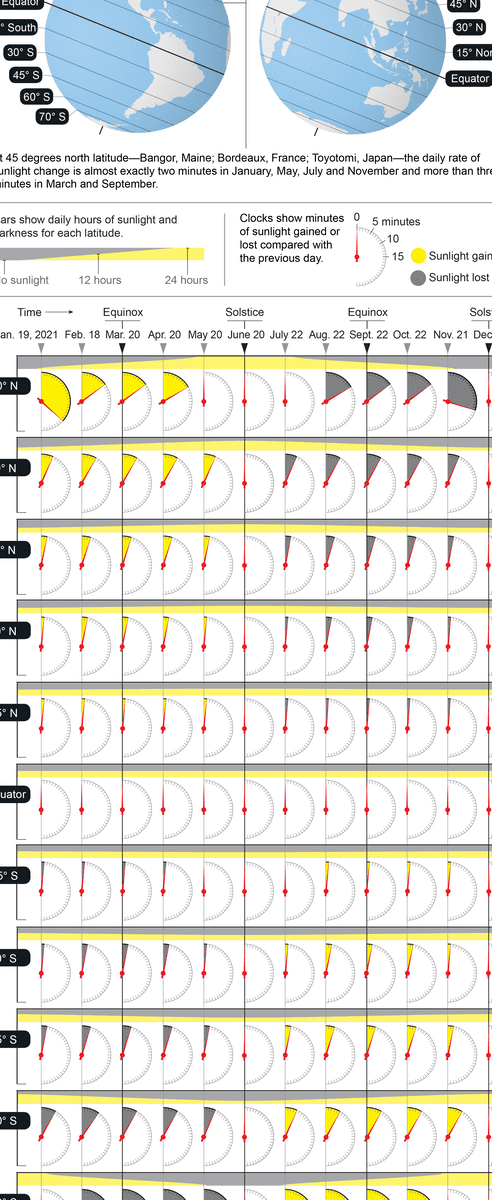As autumn arrives, the duration of daylight gradually decreases while the nights become longer. This natural phenomenon, known as the diminishing of daylight, occurs due to the Earth’s axis tilt and its orbit around the Sun.
As the northern hemisphere moves farther away from the Sun, the intensity and duration of sunlight in that region diminishes, leading to shorter periods of daylight.
Within this article, we will explore the onset of the diminishing daylight and examine the impact of reduced sunlight on life on Earth.

When do the daylight hours start to get shorter during the summer?
During the summer months, the sun shines brightly and it can feel like the days last forever.
However, the reality is that from the summer solstice, which occurs around June 21, the amount of daylight gradually begins to decrease.
This trend reaches its peak at the fall equinox, around December 21, which marks the shortest day of the year.
It is important to consider this gradual decrease in daylight hours when planning our activities and fully enjoying the summer season.
What is the daily reduction in minutes of daylight?
As we get closer to the solstice, the decrease in daylight time is minimal, but during the equinox, the change is more significant.
Currently, we are observing a daily decrease in sunlight duration of approximately 1.5-1.6 minutes, which adds up to a monthly reduction of around 2.5 minutes.
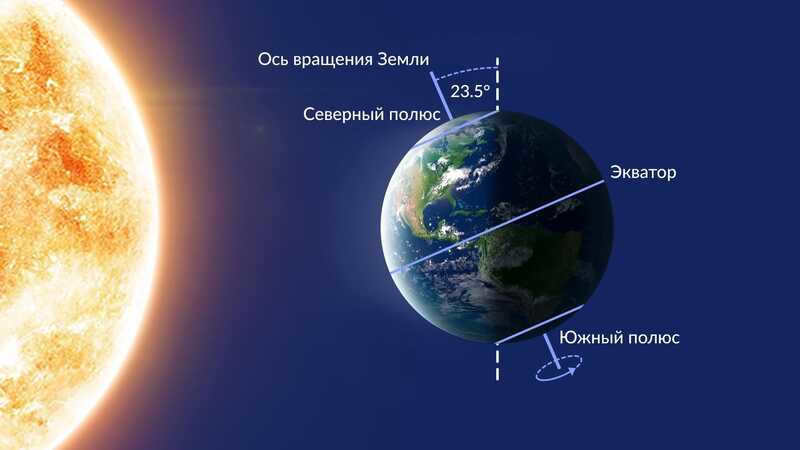
This natural cycle of the Earth has a significant impact on the climate and life on our planet.
What causes the days to become shorter?
As the seasons change, we experience a phenomenon that alters our perception of time: the days gradually become shorter. This occurs because of the tilt of the Earth’s axis, which causes the region we inhabit to move further away from the Sun and receive less daylight.
Furthermore, the Earth’s elliptical orbit around the Sun leads to variations in its velocity, contributing to the decreased duration of daylight. As we approach the winter solstice, the disparity between daytime and nighttime continues to increase until it reaches its peak on the solstice day.
The advantages and necessity of sunlight for the human body are undeniable. All of us are aware that we cannot survive without it. During the winter months, we all experience a significant lack of sunlight, which has a negative impact on our health and further weakens our already fragile immune system.
The changes in daylight hours
As the cold season approaches, the duration of daylight hours rapidly decreases. The nights become longer and longer, while the days become shorter. However, after the winter solstice, the situation gradually starts to change in the opposite direction, which is eagerly anticipated by most of us. Many individuals wish to have accurate information about the current and upcoming duration of daylight hours.

It is common knowledge that the duration of daylight hours starts to increase towards the end of the winter solstice period. Every year, there is a day known as the light day, which has the shortest duration. From a scientific perspective, this can be explained by the sun’s position being at the farthest point in our planet’s orbit. This is influenced by the elliptical shape of the orbit.
In the northern hemisphere, the winter solstice day falls on the 21st or 22nd of December. The exact date may vary slightly due to the Moon’s dynamics and leap year adjustments. On the other hand, the southern hemisphere experiences the opposite period known as the summer solstice.
Duration and Timing of Daylight Saving Time
Just before and after each solstice, the position of daylight remains unchanged. It is only a few days after the darkest days have passed that the duration of daylight starts to gradually increase. At first, this change is barely perceptible, with only a few minutes being added to the light interval each day. However, as time goes on, the rate of daylight extension accelerates due to the increasing speed of solar rotation.
In reality, the lengthening of daylight hours in the northern hemisphere does not begin until December 24-25, and it continues until the summer solstice. The exact date of the summer solstice varies each year, falling between June 20 and June 22. The increase in daylight hours has a noticeable positive impact on people’s well-being.

Astronomers state that during the winter solstice, the sun reaches its lowest point in the sky. Following this event, the sun may begin to rise slightly later each day, by a few minutes. The increase in daylight hours occurs in the evenings and is due to the progressively later sunsets.
Reasons for this phenomenon
This phenomenon can be attributed to the Earth’s increased velocity. The evidence for this can be seen in the table that displays sunrise and sunset times. Astronomers have observed that the length of the day is extended in the evening, albeit unevenly on both sides. A visual representation of this process can be seen in the graph depicting the duration of daylight hours.
Each day, the time of sunset shifts by a few minutes. This information can be easily found in relevant tables and calendars. Scientists explain that this shift is a result of the combined daily and annual movements of the sun across the sky, which are slightly faster in winter compared to summer. This variation is caused by the fact that, as the Earth rotates on its axis at a constant speed, it is closer to the Sun during winter and therefore moves faster in its orbit around it.
Our planet’s movement is characterized by an elliptical path, which exhibits a notable degree of eccentricity. This term denotes the extent to which the ellipse is elongated. The point on this eccentricity that is nearest to the Sun is known as the perihelion, while the farthest point is referred to as the aphelion.

The laws established by Kepler indicate that when a celestial body moves in an elliptical orbit, its highest velocity occurs at the points closest to the center. This is why the speed of the Sun’s movement across the sky is slightly faster during winter compared to summer.
Based on the observations of astronomers, the Earth reaches its closest point to the Sun, known as perihelion, around January 3rd, and its farthest point, known as aphelion, around July 3rd. These dates can vary by 1-2 days due to the additional influence of the Moon’s motion.
The elliptical shape of the Earth’s orbit also has an impact on the climate. During the winter in the Northern Hemisphere, our planet is positioned closer to the Sun, while in the summer, it is further away. This factor contributes to the slight difference in climate between the seasons in the northern hemisphere.
On the other hand, in the Southern Hemisphere, this difference is more pronounced. Scientists have determined that the point of perihelion completes one revolution approximately every 200,000 years. This means that in about 100,000 years, the situation will be reversed. It will be interesting to see what happens!
Time to bask in the sun!
When it comes to current issues, one crucial aspect is the undeniable fact that the well-being of Earth’s inhabitants, both emotionally and physically, improves in direct correlation with the lengthening of daylight hours. Even a small increase in the duration of the day, even by just a few minutes, following the winter solstice, has a profound impact on individuals who have grown weary of dark winter evenings.

From a medical perspective, the body’s positive response to sunlight can be attributed to an increase in the production of serotonin, a hormone responsible for feelings of happiness and joy. Unfortunately, serotonin production is hindered in darkness. This is why extending the duration of exposure to light can have a positive impact on emotional well-being and overall health, while also boosting the immune system.
Our daily internal biorhythms, which are energetically connected to the natural cycle of day and night since the dawn of time, play a significant role in our overall well-being. Scientists believe that our nervous system can effectively handle external stressors only when regularly exposed to an appropriate amount of sunlight.
Insufficient Lighting: Its Impact on Mental Health
Inadequate sunlight can have profound consequences, ranging from frequent bouts of anxiety to severe mental disorders. A severe lack of light can even lead to the development of clinical depression. Seasonal affective disorders, characterized by symptoms such as depression, low mood, and an overall decrease in emotional well-being, are prevalent in areas with insufficient sunlight.

What is the duration of a day?
Let’s now discuss the concept of the length of a day, which is relevant for each of us in the first few days after the winter solstice. This term refers to the period of time from sunrise to sunset, which is the duration that the sun is visible above the horizon.
This value depends on the solar declination and the geographic latitude of the location where it is being determined. At the equator, the duration of a day remains constant and is exactly 12 hours. This is the boundary value. In the northern hemisphere, the length of a day is longer than 12 hours in spring and summer, and shorter in winter and fall.
Autumnal and vernal equinoxes
The vernal equinox and the autumnal equinox are the days when the length of the night is equal to the length of the day. These events occur on March 21 and September 23, respectively. It is evident that the longest duration of daylight is reached during the summer solstice, while the shortest duration occurs on the day of the winter solstice.
Outside the polar circles in each hemisphere, the duration of daylight exceeds 24 hours. This phenomenon is known as the polar day. At the poles, the polar day lasts for half a year.

Special tables containing calculations of daylight hours provide a relatively accurate determination of the day length at any given location on the hemisphere. It is important to note that this value changes daily. To provide an approximate estimation, the concept of average length of daylight hours by month is often utilized. To illustrate this, let’s examine these figures for the geographical point where the capital of our country is situated.
Duration of daylight hours in Moscow
The average duration of daylight hours in Moscow varies throughout the year. In January, the daylight hours at the latitude of our capital are approximately 7 hours 51 minutes. This gradually increases to 9 hours 38 minutes in February and reaches its peak at 11 hours 51 minutes in March. As the year progresses, the days become longer, with April having 14 hours 11 minutes of daylight and May having 16 hours 14 minutes.
During the summer months of June, July, and August, the daylight hours are at their longest. In June, the days have approximately 17 hours 19 minutes of daylight, while July has 16 hours 47 minutes and August has 14 hours 59 minutes. This is in line with the summer solstice, which occurs in June.
As autumn arrives, the daylight hours start to shorten. In September, the duration is 12 hours 45 minutes, and in October, it decreases further to 10 hours 27 minutes. The last two months of the year, November and December, are known for their short and dark days, with an average day length of only 8 hours 22 minutes and 7 hours 16 minutes, respectively.

Traditionally, a day is divided into morning, afternoon, evening, and night. Simplifying the categorization further, these periods can generally be classified as dark and light times. As winter approaches, the sunlight diminishes significantly, with darkness descending as early as four o’clock in the afternoon.
Contrasts between the light and astronomical day
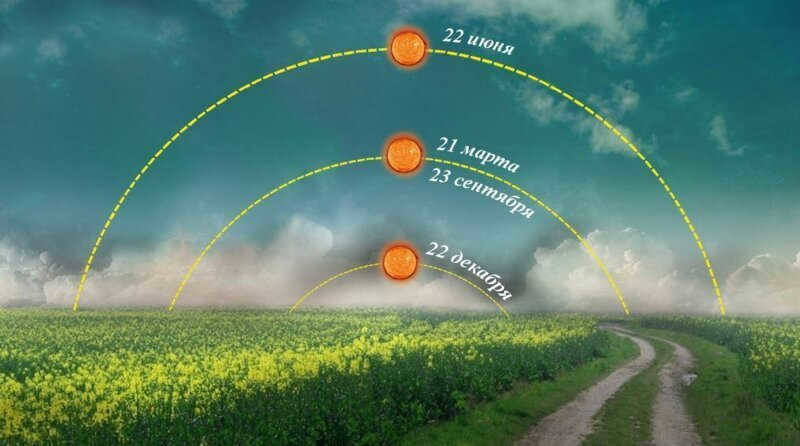
The Earth completes one full rotation on its axis in 24 hours, resulting in what is known as an astronomical day. This day is divided into two equal segments of 12 hours each, known as day and night.
Daylight hours refer to the period of time between dawn and dusk. The term “daylight” is used because it is directly influenced by the sun. The duration of daylight can vary from day to day, as no two days are exactly the same in terms of length. Even a difference of a single second is inevitable.
In the past, before the advent of the internet, this type of information was typically found on tear-off calendars that could be found in many households.
What are the factors that influence the duration of a day?
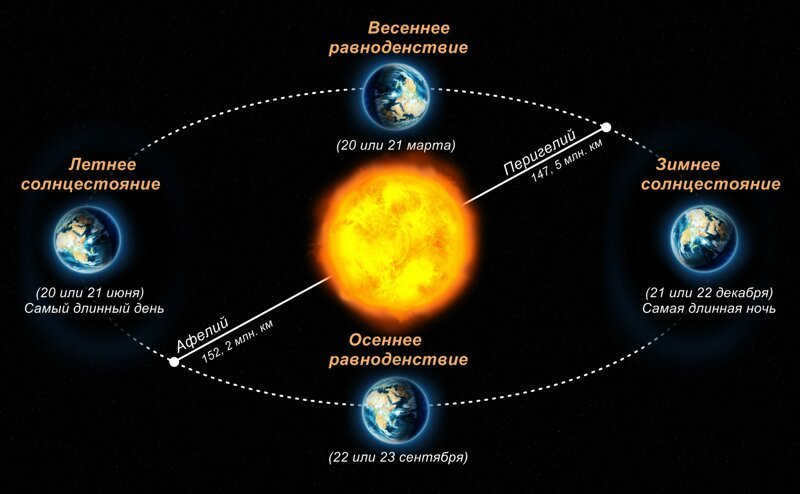
The Earth is tilted at an angle of 23.5 degrees relative to the Sun. This tilt is responsible for the shorter days we experience in winter. During the warmer months, the Sun stays above the horizon for a longer period of time, providing more warmth to the surface. However, in winter, the sun’s rays reach the Earth for a much shorter duration. Combined with high levels of cloudiness, heavy rain, or snowfall, it can sometimes feel like the day ends before it even begins.
It’s worth noting that beyond the Arctic Circle, the Sun moves along the horizon line. The period of time when the Sun does not rise or set is called the polar night, which lasts for half a year, just like the polar day.
At the equator, which is a line dividing the Earth’s surface in half and perpendicular to its axis of rotation, the duration of daylight and astronomical day is nearly equal, lasting for approximately 12 hours.
Winter and summer solstice days explained
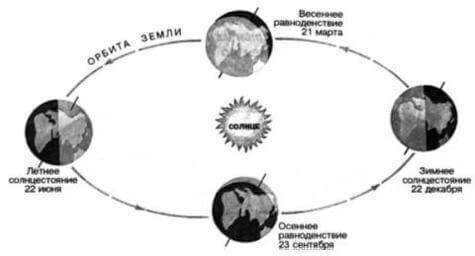
Once every year, either on December 21 or December 22, the Earth’s axis reaches its maximum tilt angle. This occurrence is known as the solstice in astronomy. During this period, the duration of daylight is at its minimum, lasting only 8 hours. The following days maintain this duration before gradually increasing. In the southern hemisphere, the solstice occurs on either June 20 or June 21.

This phenomenon was resolved through a decree issued by Julius Caesar. In the Julian calendar, the winter solstice occurred on December 25. However, discrepancies between the tropical (solar) and calendar year resulted in the date being shifted to December 12 during the 16th century.
To address these discrepancies, Pope Gregory XIII abolished them in 1582. As a result, the longest night of the year now falls on December 21 or 22 (with adjustments made for leap years). Some researchers suggest that a further shift of one day may be possible, but if this were to occur, it would likely happen in the near future, within a 3000-year timeframe.
Thus, the primary determinant of the length of the winter day is the Earth’s position in relation to the Sun. The farther a particular area is from the equator, the shorter its winter day will be. In regions beyond the Arctic Circle, the night can endure for half of the year.
How can you help a child understand why the sun rises later in the winter?

Undoubtedly, it can be quite challenging to elucidate to children the reason behind the shorter days in winter, especially from an astronomical standpoint. However, a simple experiment can effectively shed light on this phenomenon. All you need is a globe, or alternatively, a ball, an orange, or any other spherical object. Place it under a lamp at an inclined angle and slowly rotate it to demonstrate to the child how the planet moves in relation to the Sun. Through this demonstration, the child can comprehend that the time of year, and consequently, the duration of day and night, are determined by the position of the Sun at a specific point in time. If there was no tilt, the planet would receive equal illumination, resulting in day and night being of equal length throughout the year.
Daylight hours refer to the period of time between sunrise and sunset. The duration of daylight hours varies depending on the Earth’s position in its orbit around the Sun. The longest day with the most daylight hours occurs on June 21, lasting for 16 hours. On the other hand, the shortest day, which only lasts for 8 hours, falls on either December 21 or 22, depending on whether it is a leap year. During the fall season, on September 21 and March 21, nature celebrates the autumn and spring equinoxes, respectively. These are the days when the duration of daylight hours equals the duration of nighttime – the time between sunset and sunrise.
The impact of daylight duration on human beings
Humans, as integral components of the planet’s biosphere, are also affected by the length of daylight hours, even though their daily routines are typically governed by work schedules. However, medical research has corroborated that during the winter months, the body’s metabolic rate decreases, leading to heightened drowsiness and weight gain.
The lack of adequate natural light also impacts one’s psycho-emotional state. During the winter and early spring months, many individuals experience feelings of depression, irritability, headaches, insomnia, and a general sense of malaise. These disruptions in mood can lead to disruptions in the functioning of other bodily organs and systems. Furthermore, the body’s production of natural vitamin D decreases during this time, resulting in a weakened immune system and a higher likelihood of illness and exacerbation of chronic conditions. Medical professionals recommend spending time outdoors, particularly in nature, during late winter and early spring. This can help improve mood and overall well-being.
The importance and indispensability of sunlight for the human body are indisputable. It is common knowledge that we cannot thrive without it. During the winter season, we all endure varying degrees of sunlight deficiency, which adversely affects our overall health and weakens our already delicate immune system.
What occurs with the duration of daylight hours
During the arrival of the frigid season, the length of the daylight hours diminishes rapidly, allowing for a greater prominence of the night. As a result, the days become shorter while the nights grow longer. However, after the winter equinox, this pattern reverses, much to the anticipation of many individuals. Numerous people desire to have precise knowledge of the current and upcoming duration of daylight hours.
In the northern hemisphere, the winter solstice occurs in December and falls on the 21st-22nd day. This date may vary slightly depending on the lunar dynamics and leap year adjustments. Conversely, the southern hemisphere experiences the opposite period of the summer solstice.
Daylight saving time: duration and timing
During the few days before and after each solstice, the position of daylight remains relatively unchanged. It is only a few days after the darkest days that the length of daylight starts to gradually increase. Initially, this process is barely noticeable, with only a few minutes of added daylight each day. However, as time progresses, the daylight starts to increase at a faster rate due to the accelerating speed of solar rotation.
Actually, the lengthening of daylight hours in the northern hemisphere of the Earth doesn’t start until around December 24-25, and it continues until the summer solstice, which falls on one of three dates: June 20 to June 22. The increase in daylight hours has a significant beneficial impact on human well-being.

Astronomers state that the winter solstice signifies the point at which the sun attains its lowest angular elevation above the horizon. Following this, the sun’s rise can be delayed by a few minutes. The lengthening of daylight hours is observed in the evenings and is attributed to progressively later sunsets.
What Causes This Phenomenon
The reason behind this occurrence can be attributed to the Earth’s increased velocity. By examining the table that displays the times of sunrise and sunset, one can easily observe this effect. According to astronomers, the length of the day is extended in the evening, but not evenly on both sides. A graphical representation of the duration of daylight hours offers a visual depiction of the progression of this process.
Each day, the time of sunset shifts by a few minutes. This precise information can be easily tracked using the corresponding tables and calendars. Scientists explain that this phenomenon is a result of the combination of the sun’s daily and annual movements across the sky, which occur at a slightly faster rate during the winter compared to the summer. The cause of this difference can be attributed to the Earth’s rotation on its own axis at a constant speed, as well as its proximity to the Sun and faster orbital movement during the winter months.

It is contended that the maximum velocity for a celestial body in orbit around an elliptical path is found at the points nearest to the center. Hence, the Sun appears to move slightly faster across the sky during the winter season compared to the summer season.
The Impact of Earth’s Orbital Motion on Climate
Astronomers assert that the Earth reaches its perihelion, or closest point to the Sun, around January 3, and its aphelion, or farthest point from the Sun, around July 3. These dates can vary by 1-2 days, influenced by the Moon’s motion.
Furthermore, the elliptical shape of Earth’s orbit also affects the climate. In the Northern Hemisphere, the Earth is closer to the Sun during winter and farther away during summer. This factor contributes to a slightly less pronounced difference between the seasonal climates in the northern hemisphere.
Meanwhile, in the Southern Hemisphere, this disparity is more evident. According to scientific findings, it takes about 200,000 years for the perihelion point to complete one revolution. Therefore, in approximately 100,000 years, the situation will be reversed. Well, we will simply have to bide our time and observe.
Let’s soak up some sunshine!
Shifting our focus back to current issues, what matters most is the fact that the emotional, mental, and physical well-being of Earth’s inhabitants improves in direct correlation with the lengthening of daylight hours. Even a small (a few minutes) extension of the day immediately following the winter solstice has a profound uplifting effect on individuals weary of dark winter evenings.

From a medical perspective, the beneficial impact of sunlight on the body is attributed to an increase in the production of the hormone serotonin, which is responsible for feelings of happiness and joy. Unfortunately, serotonin production is significantly impaired in the absence of sunlight. Thus, extending the duration of daylight exposure can have a positive effect on emotional well-being and overall health by boosting serotonin levels and strengthening the immune system.
The daily internal biorhythms, which are closely tied to the natural cycle of day and night that has existed since the inception of the world, play a vital role in our well-being. Scientists firmly believe that our nervous system can effectively function and handle external stressors only when regularly exposed to a sufficient amount of sunlight.
Insufficient Illumination: Its Effects and Implications
In situations where sunlight is inadequate, the outcomes can be quite unfortunate, ranging from frequent episodes of anxiety to severe mental disorders. A severe deficiency of light can lead to the development of a genuine state of depression. These seasonal affective disorders manifest as depression, low mood, and an overall decrease in emotional well-being, and can be observed universally.
Furthermore, residents of contemporary cities face another problem. The limited duration of daylight hours, which is insufficient for modern urban lifestyles, necessitates adaptation. We are referring to an overwhelming and frequently excessive amount of artificial lighting that nearly every city dweller is exposed to. Our bodies, unaccustomed to such a high level of artificial light, can become disoriented and experience desynchronosis. This not only weakens the nervous system but also exacerbates any preexisting chronic conditions.

How long is the day?
Now let’s explore the concept of the duration of the day, which is relevant to each of us in the days following the winter solstice. This term refers to the period of time that occurs between sunrise and sunset, when the sun is visible above the horizon.
The length of the day is directly influenced by the solar declination and the geographic latitude of the specific location. At the equator, the length of the day remains constant at exactly 12 hours. This serves as a boundary value. In the northern hemisphere, the day is longer than 12 hours during the spring and summer months, and shorter during the winter and fall seasons.
Equinoxes in Autumn and Spring
The days known as the vernal equinox and the autumnal equinox are marked by the equal length of day and night. The vernal equinox occurs on September 23, while the autumnal equinox occurs on the same date. During the summer solstice, the longest day of the year, the length of day reaches its peak, while on the winter solstice, the shortest day of the year, it reaches its lowest point.
Beyond the polar circles in each hemisphere, the length of day goes off the scale for 24 hours. This phenomenon is known as the polar day. At the poles, the polar day lasts for half a year.

The duration of the day in any location on the hemisphere can be accurately determined using specialized tables that calculate the length of daylight hours. Naturally, this value varies on a daily basis. Occasionally, an average duration of daylight hours per month is used as an approximate estimate. To provide a clearer understanding, let’s examine these figures for the geographical point where the capital of our country is situated.
Duration of daylight hours in Moscow
In January, the average duration of daylight in Moscow is 7 hours and 51 minutes. In February, it increases to 9 hours and 38 minutes. By March, the daylight hours reach 11 hours and 51 minutes, and in April, they extend to 14 hours and 11 minutes. The month of May experiences even longer daylight hours with a duration of 16 hours and 14 minutes.
During the summer months of June, July, and August, the duration of daylight in Moscow is 17 hours and 19 minutes, 16 hours and 47 minutes, and 14 hours and 59 minutes, respectively. It is worth noting that the longest daylight hours occur in June, which coincides with the summer solstice.
In the autumn, the daylight hours begin to decrease. In September and October, the duration is 12 hours and 45 minutes and 10 hours and 27 minutes, respectively. The shortest daylight hours are experienced in the cold and dark months of November and December, with an average duration of 8 hours and 22 minutes and 7 hours and 16 minutes, respectively.
Is it the sun that wakes you up in the morning as it shines through your window?
Or does the sun spend the evening casting gentle rays that softly reflect through the windows of your house?
Of course, the familiar scene of sunrise and sunset depends on which side your house’s windows face. If we don’t consider cloudy weather when the sun is not visible, then witnessing the sunrise at dawn and bidding farewell to the sunset happens regularly twice a day – in the morning and in the evening.
Example: Move your mouse across the picture from left to right.
A little challenging?
Then visit this link: Time of day for children +3 to>7
What is the time of day.
A day is a period of time when the sun rises in the east, travels across the sky, and sets in the west. At night, the sun rises again from the east on the other side of the planet.
A day lasts for 24 hours, which is equivalent to 1440 minutes or 86,400 seconds. Each hour consists of 60 minutes, and each minute consists of 60 seconds. To make it easier to tell time, two formats are commonly used:
- 12-hour time format – this format is used to designate time before noon (from 0 hours 00 minutes to 11 hours 59 minutes, denoted as a.m.) and afternoon time (from 12:00 a.m. to 11:59 p.m., denoted as p.m.). This format is used in England, Ireland, France, Greece, Turkey, Australia, Canada, USA, and the Philippines.
- The 24-hour time format ranges from 0 hours 00 minutes to 23 hours 59 minutes. It is the prevailing time format in Russia and numerous other countries worldwide.
The Earth’s cycle of day and night

In addition to the Earth’s yearly rotation around the sun, the planet also rotates around its axis. A full revolution on its axis occurs within a 24-hour period, which is known as a day.
While we are on the Earth’s surface, we cannot physically feel the movement of the planet, but we can observe it through the visible movements of the sun and stars relative to the Earth.
Traditionally, the day is divided into several parts:
- Morning – starts with the sky brightening in the eastern part and the sun rising above the horizon.
- Day – the sun’s movement across the sky from east to west.
- Evening – the sun sets in the western part of the sky and the colors of the sunset gradually fade away.
- Night – the period of darkness during a 24-hour cycle. During this time, the sun is located on the opposite side of the globe in relation to us.
Due to the presence of continents on both sides of the globe, the time of day varies in different parts of the Earth. Therefore, while it is nighttime in New York, it is already morning in London, noon in Moscow, and evening in Petropavlovsk-Kamchatsky.
Changing the Time of Day
Many photographers have attempted to capture the transformation of day and night. By capturing multiple consecutive shots from a fixed position, it becomes possible to observe the smooth movement of the sun across the sky, the movement of stars, and even create stunning video clips of both sunrise and sunset. This technique, known as time-lapse photography, involves mounting the camera on a tripod and capturing a series of photos at specific intervals over an extended period of time.
While the length of a day remains constant, the duration of its different components varies depending on the season. This variation is due to the Earth’s tilt and its elliptical trajectory around the sun. As a result, summer days have longer daylight hours than nights, whereas winter nights are longer than days.
Meanwhile, across various regions of the world, the length of day and night varies. For instance, in the Crimea during the summer, evening descends quickly, resulting in dark nights. On the other hand, June in St. Petersburg is renowned for its “white nights” when the sun hovers just below the horizon, creating the illusion of bright nights.
Distinct times of the day possess unique appearances and perceptions. This phenomenon is influenced by the individual’s biological clock, which dictates wakefulness during the day and sleep during the night, as well as by the contrasting colors and overall mood. Mornings bring a surge of energy, with the day dedicated to learning, work, and business. As the evening approaches, fatigue sets in, leading to a gradual disengagement from tasks and eventually culminating in restful sleep.
The artist Nikolai Petrovich Krymov depicted the change in time of day in his educational landscape titled “Transformation of the Landscape through Tone and Color at Various Times of Day”.
Krymov chose a simple subject for the landscape – a house near a forest, with a diagonal path that adds depth to the painting. The field and sky are also included, and occasionally people can be seen walking along the path, bringing the scene to life. Krymov painted the landscape 9 times, capturing its transformation at different times of the day. He effectively showcased how the landscape, colors, and paints change during dawn, morning, the movement of shadows in the afternoon, sunset in the evening, and the darkness of night.
The entire plant and natural world adapts to the rhythm of the day. Plants blossom in the morning and close their buds in the evening. Similarly, the human world adjusts to the changing time of day. The most common work schedules, school timetables, the operations of educational institutions and entertainment centers, and even radio and television programs are all designed around the time of day.
With the arrival of each new season, the length of daylight hours and the weather undergo changes. Summer days are longer and warmer, while winter days are shorter and colder. Throughout the year, the different seasons bring about transformations in the world around us. The position of constellations in the night sky shifts on a daily basis. The stars that are visible during the summer are quite distinct from the ones observed in winter.
During the spring season, as the days of winter become shorter, the sun gradually ascends higher and higher above the horizon and stays in the sky for longer periods each day. Summer, on the other hand, is characterized by the highest temperatures of the year. As the sun reaches greater heights above the horizon, the warming impact of its rays intensifies. As autumn arrives, the days once again begin to shorten, leading to the shedding of leaves by many trees. As winter approaches, the weather progressively cools down.
Close to the equator, the duration of daylight hours remains fairly consistent throughout the year and the temperature is consistently hot. Nonetheless, the precipitation levels vary at different periods of the year. In certain tropical areas, there are only two distinct seasons: the wet (rainy) season and the dry season. The degree of seasonal variation increases as we move further away from the equator. Near the poles, the contrast in daylight hours between winter and summer is significant, yet there is never any actual warmth due to the sun’s low position above the horizon even during the peak of summer.
The Earth completes its orbit around the Sun in the span of a year. The changing of seasons is a result of the Earth’s axis, which is a fictional line running through the North and South Poles, being tilted at an angle of 23 1/2° in relation to its path around the Sun. From around March 21 to September 21, the North Pole faces the Sun and the Northern Hemisphere goes through spring and then summer. Simultaneously, the South Pole is positioned further away from the Sun. From September to March, the situation is reversed. During this time, the Northern Hemisphere experiences fall and winter, while the Southern Hemisphere has spring and summer.
Each year, around March 21 and September 23, the duration of daylight and darkness is equal all over the globe. These dates are known as the vernal and fall equinoxes. At midday on equinox days in locations on the equator, the sun is perfectly perpendicular overhead. The days with the longest and shortest periods of daylight are called the summer and winter solstices. These occur on June 22 and December 22 (or the days immediately preceding and following these dates).
Polar Day:
Within the polar regions, the sun remains above the horizon for numerous days or even weeks during the summer season. This occurrence is known as a polar day. In the winter, the sun does not rise above the horizon at all, resulting in the polar night. The tilt of the Earth’s axis is responsible for this phenomenon. Regions that experience polar day and polar night are situated within the Arctic Circle and the Antarctic Circle. While there is no permanent population in Antarctica, individuals residing within the Arctic Circle must acclimate to extended periods of continuous daylight or darkness.
The change in the length of daylight throughout the year is caused by the Earth’s rotation on its axis. If the Earth did not rotate, the patterns of day and night would be significantly altered, and it is possible that they may not exist at all. The duration of daylight hours varies depending on the season and location on Earth. Daylight saving time is also influenced by the tilt of the Earth’s axis and its orbit around the Sun.
A full day consists of the Earth completing a full revolution on its axis, which takes approximately 24 hours. This is why the Sun appears in the same position in the sky the following day. However, it’s important to remember that the Earth is also orbiting around the Sun, which greatly affects the duration of daylight hours.
In reality, the actual time it takes for one full rotation of the Earth is slightly shorter than we previously believed, around 23 hours and 56 minutes. Astronomers made this discovery by observing the time when a star reappeared in the same spot in the sky the next day, which they named a sidereal day.
Days Getting Longer and Shorter
While a solar day lasts for 24 hours, not all days have equal amounts of daylight and darkness. Winter nights are longer than summer nights. This happens because the Earth’s imaginary axis is tilted at an angle of 23.5 degrees, not perpendicular to its orbit. As our planet orbits the Sun, the northern hemisphere tilts toward the Sun during the summer, resulting in longer daylight hours and shorter nights. In winter, the Earth moves farther away from the Sun, causing longer nights. During spring and fall, the Earth is positioned in between these extremes, resulting in equal amounts of day and night. This is why daylight hours increase in the spring as our planet turns closer to the Sun!
Our daylight hours are determined by our latitude and the relative position of the Earth to the Sun. The Earth’s axis of rotation is tilted towards the polar star and remains in the same direction. This tilt causes the Earth’s axis to constantly shift in relation to the Sun, resulting in changes in our daylight hours throughout the year.

Actually, it is this particular factor that impacts the distribution of sunlight across the surface of the Earth at any given latitude.
A variation in angle results in a variation in the quantity of solar energy that reaches specific regions of the planet. This leads to a seasonal alteration in the strength of sunlight that reaches the surface and influences the duration of daylight hours.
The alteration in strength happens because the angle at which rays from the Sun travel and reach the Earth alters as the seasons shift.
If you point a flashlight towards the ceiling, the illuminated region will vary based on whether the light is directed at a perpendicular angle or not. Likewise, the energy from the Sun is dispersed across various geographic areas upon reaching the Earth’s surface. This dispersion is more concentrated during our summer months when the sun is positioned higher in the sky.
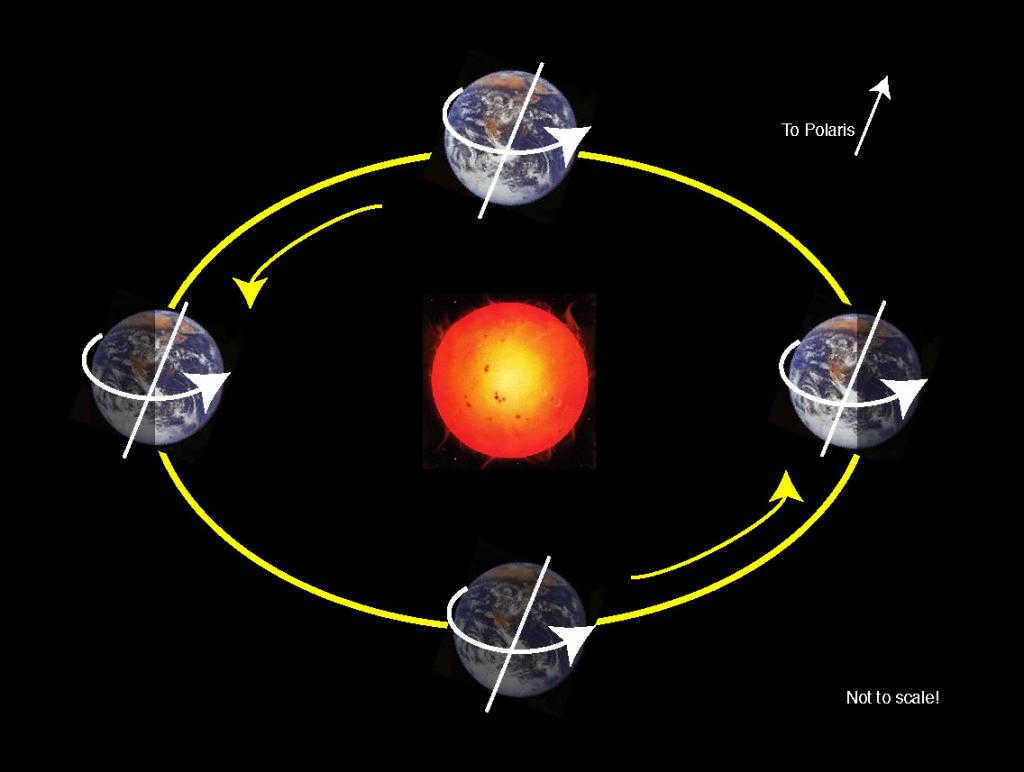
During the transition from the summer solstice to the winter solstice, the duration of daylight hours gradually diminishes, and this decrease is more pronounced at higher latitudes. The decrease in sunlight leads to colder nights. This is why, as spring approaches, the length of daylight hours starts to increase: the Earth gradually tilts towards the Sun, resulting in more solar energy being absorbed from one side of the planet.
Additionally, as the Earth continues to rotate on its own axis while orbiting the Sun, it completes one full rotation every 24 hours. Interestingly, the length of a day has changed over time. For instance, around 650 million years ago, a day lasted approximately 22 hours instead of the customary 24!
Solstice
The solstice is an event that occurs when the Earth reaches a specific position in its orbit, marking the longest and shortest days of the year. In the Northern Hemisphere, the winter solstice signifies the shortest day, after which the amount of daylight gradually starts to increase. Conversely, the summer solstice in the same hemisphere boasts the longest daylight hours, after which the days begin to shorten. Additionally, the solstice is named after the month in which it takes place.
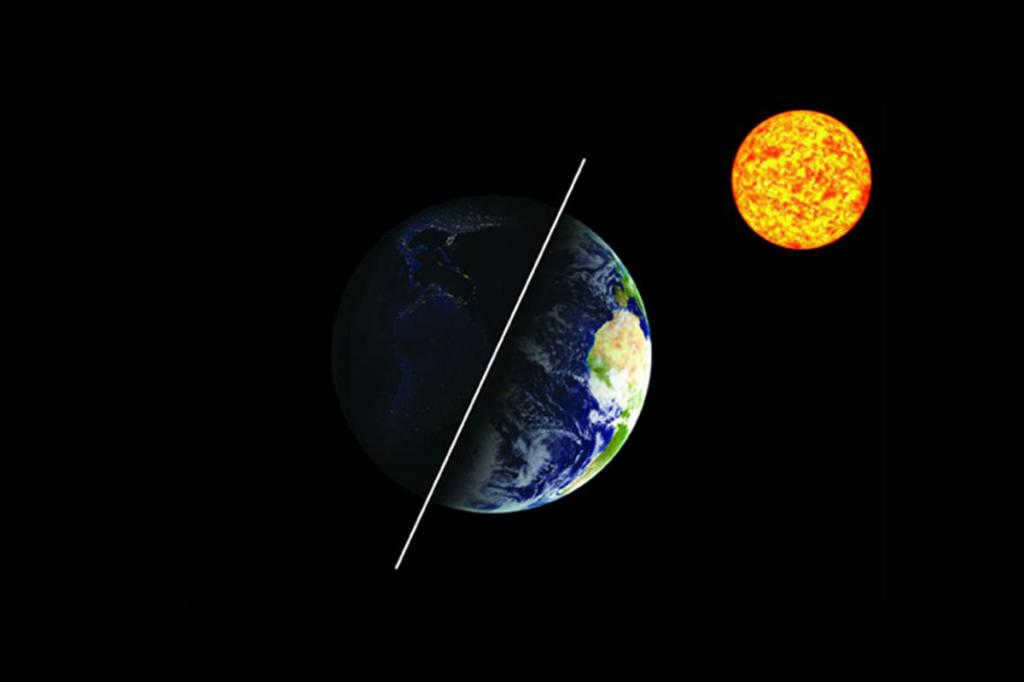
It is worth noting that the duration of daylight hours on the solstice day varies depending on the hemisphere you are located in. In the Northern Hemisphere, for instance, the June solstice signifies the longest period of daylight throughout the year. Conversely, in the Southern Hemisphere, the June solstice represents the longest night.
 A daytime sky adorned with fluffy white clouds
A daytime sky adorned with fluffy white clouds  A captivating daytime view of the Gulf of Sorrento
A captivating daytime view of the Gulf of Sorrento
- 1 Features
- 2 Daytime changes depending on the latitude and time of year
- 2.1 At the equator
- 2.2 In tropical regions
- 2.3 Around the poles
- 2.4 At mid-latitudes
- 2.5 Variations in solar noon
Features
Roughly half of the Earth is constantly illuminated by the Sun. The portion of the planet directly exposed to sunlight is almost half, but due to atmospheric and other factors that expand the area of indirect illumination, the portion of the planet covered by direct or indirect sunlight is slightly more than half of its surface.
The Earth’s rotation causes the hemisphere experiencing daylight to constantly change. This is because the Earth’s axis of rotation is not perpendicular to its orbit around the sun, which means that the length of the daytime period varies across different locations on the planet. Additionally, the Earth’s axis of rotation moves relative to the Sun as the planet orbits, resulting in seasonal variations in the length of the day at most places on Earth.
The time of day as seen from the surface of the Earth is generally defined as the time between sunrise, when the Earth’s rotation causes the Sun’s disk to first appear above the horizon, and sunset, when the Earth’s continued rotation causes the Sun’s disk to disappear behind the horizon in the west. Because the Sun appears as a disk of light when viewed from Earth, rather than a single point of light, sunrise and sunset are not instantaneous and their exact definition can vary depending on the situation. Additionally, the Earth’s atmosphere bends and scatters the Sun’s light, which prolongs the duration of sunrise and sunset. During a certain period after sunset and before sunrise, the indirect light from the Sun illuminates the sky on Earth; this period is commonly known as twilight. Some groups, such as terrestrial astronomers, do not consider daylight hours to be truly over until the Sun’s disk is well below the Earth’s horizon due to this indirect illumination.
Daylight varies based on latitude and seasons
The duration of daylight changes depending on the latitude and time of year. To illustrate this, we will focus on Latitude 40°N, which is roughly where you would find cities like New York, Madrid, and Beijing. Here is an image showing the Earth’s daylight hours at the June solstice: 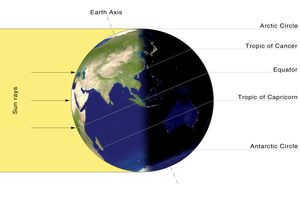 And here is an image depicting the Earth’s daylight hours at the December solstice:
And here is an image depicting the Earth’s daylight hours at the December solstice: 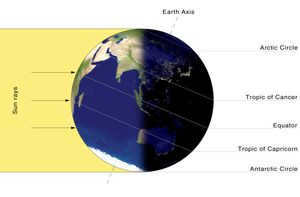
While the Equator experiences 12 hours of daylight throughout the year, the duration of daylight varies at other latitudes depending on the season. During winter, daylight hours are shorter than 12 hours, and during summer, they are longer than 12 hours. The winter in the Northern Hemisphere aligns with the summer in the Southern Hemisphere, and vice versa.
On the equator
On the equator, the duration of daylight is consistently around 12 hours, regardless of the time of year. When observed from the equator, the Sun consistently ascends and descends vertically, following a visible path that is nearly perpendicular to the horizon. Due to the Earth’s axial tilt, the Sun always remains within 23.44° north or south of the celestial equator, ensuring that it is always within the tropical regions.
During the period from the March equinox to the September equinox, the Sun consistently rises in the exact east within a latitude of 23.44° north, and sets in the exact west within the same latitude. However, from the September equinox to the March equinox, the Sun rises in a latitude of 23.44° south of the exact east, and sets in a latitude of 23.44° south of the exact west. This means that during the first period, the Sun’s path lies entirely in the northern half of the celestial sphere, while during the second period, it lies entirely in the southern half. On the days of the equinoxes, the Sun reaches its highest point at the zenith, directly overhead, at solar noon.
The reason why the tropical zone has the hottest regions on Earth is because the Sun is always very close to directly overhead at solar noon. Furthermore, the equator experiences the shortest duration of sunrise or sunset due to the Sun’s path being almost perpendicular to the horizon. During the equinoxes, it only takes two minutes for the Sun to appear above or disappear below the horizon (during sunrise and sunset respectively).
In the tropics, the Sun is directly above only once a year, during the corresponding solstice. At latitudes nearer to the equator, and at the equator itself, it will intersect twice a year (on equinox days at the equator). Beyond the tropics, the Sun never reaches directly overhead.
Exploring the regions near the Earth’s poles
Around the poles, which align with the Earth’s axis of rotation as it moves across the surface, there are extreme seasonal variations in the length of daylight. Within a latitude of 23.44° from the poles, there are a few days each year when the Sun never goes below the horizon. There are also days when the Sun never rises above the horizon. Although this number is smaller, it is similar to the number of summer days when the Sun does not set (for example, sunrise usually occurs a few days before the spring equinox and continues for a few days after the autumn equinox). The phenomenon of having more daylight than darkness is not exclusive to the poles. In fact, at any given time, slightly more than half of the Earth is in daylight. The 24-hour summer daylight is referred to as the midnight sun in certain northern countries. In the north, this boundary is marked by the Arctic Circle at 23.44°. In the south, the boundary is marked by the South Polar Circle. These boundaries correspond to 66.56° north or south latitude, respectively. Since the Sun’s disk is approximately half a degree in diameter and very bright, true dark days, when it appears as if the Sun never rises, can only be observed beyond 72° north or south latitude.
In regions with moderate latitudes
At mid-latitudes, away from the equator and poles, the variations in the length of the day are moderate. In higher mid-latitudes, such as Montreal, Paris, and Ushuaia, there is a significant difference in the length of the day between summer and winter. During the summer, the sky may remain illuminated until 22:00, while in winter it may become dark as early as 17:00. In lower mid-latitudes, like Southern California, Egypt, and South Africa, the seasonal difference in day length is smaller but still amounts to approximately 4 hours between the winter and summer solstices. As one approaches the equator, this difference becomes less noticeable. An estimate of the monthly change can be obtained using the rule of 12. When there is a 4-hour change in daylight over a six-month period from winter to summer, the day lengthens by approximately 4 * 1/12 hours (20 minutes) in the first month, 4 * 2/12 hours (40 minutes) in the second month, 4 * 3/12 hours (1 hour) in the third month, and then 1 hour, 40 minutes, and 20 minutes in the fourth, fifth, and sixth months.
In the mid-latitudes, the climate exhibits noticeable seasonal variations due to changes in day length. This is evident through distinct cold and hot periods, as well as secondary seasonal changes like the presence of snow and ice in winter that melt away in summer. On the other hand, high latitudes experience cold temperatures for most of the year, with constant snow and ice, making the seasons less pronounced. Conversely, in the tropics, hot weather prevails throughout the year, without any snow or ice, resulting in less noticeable seasons.

